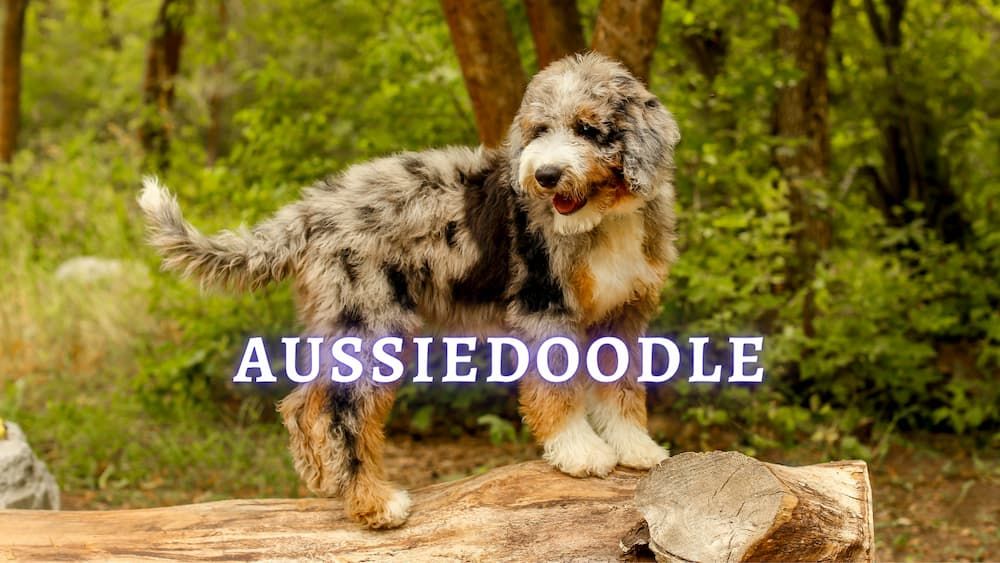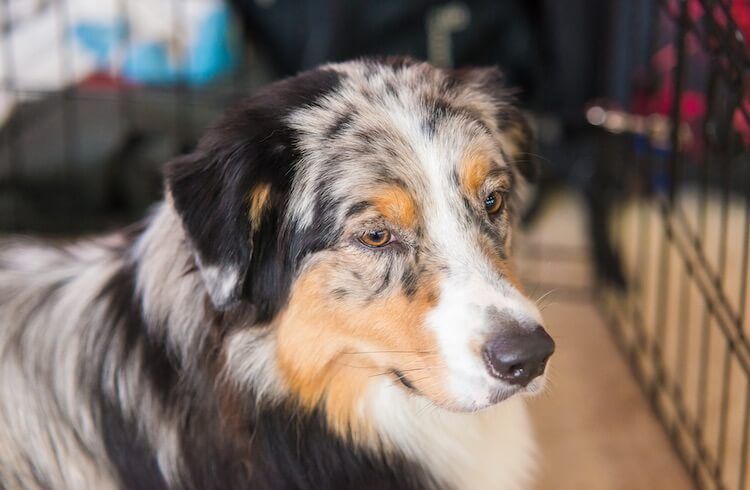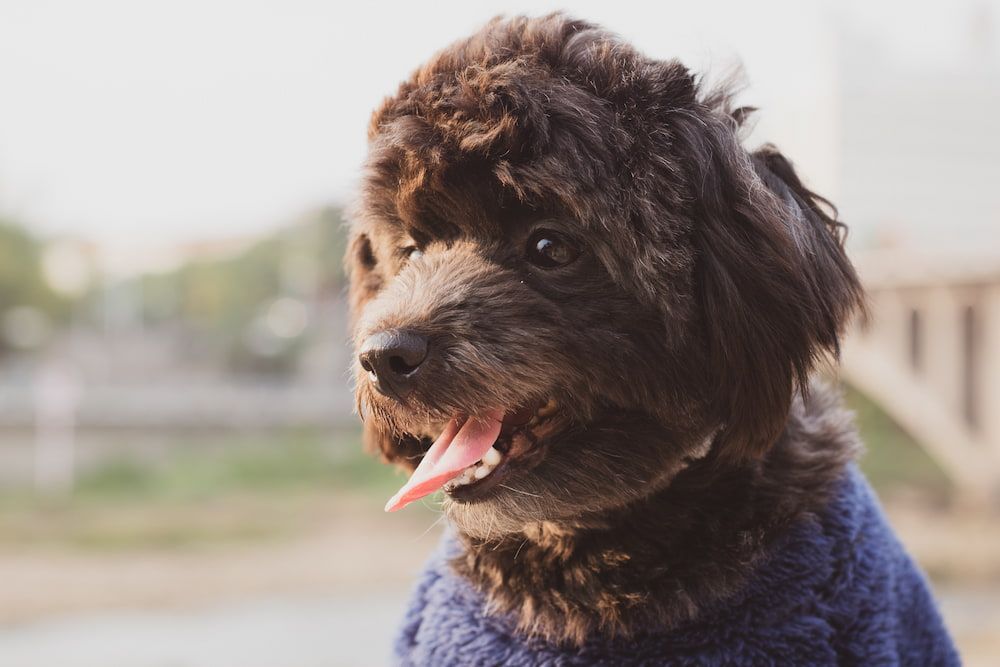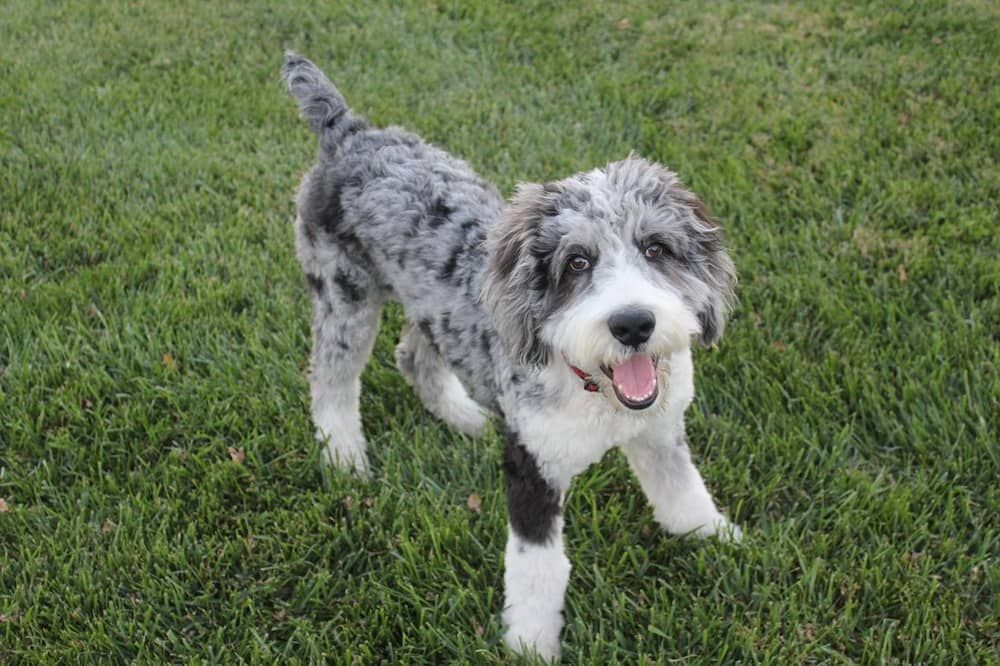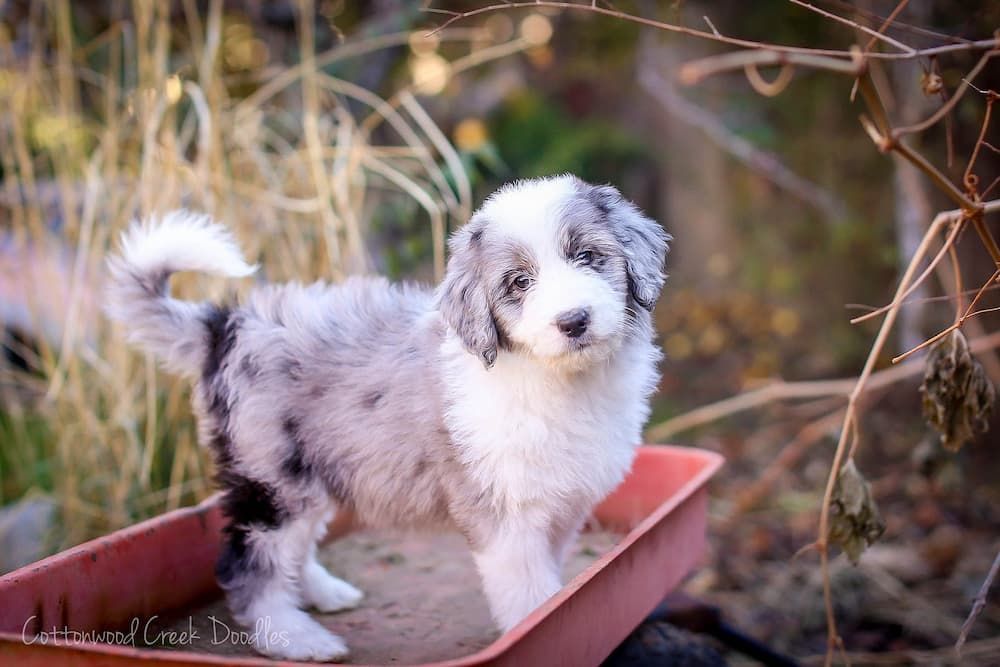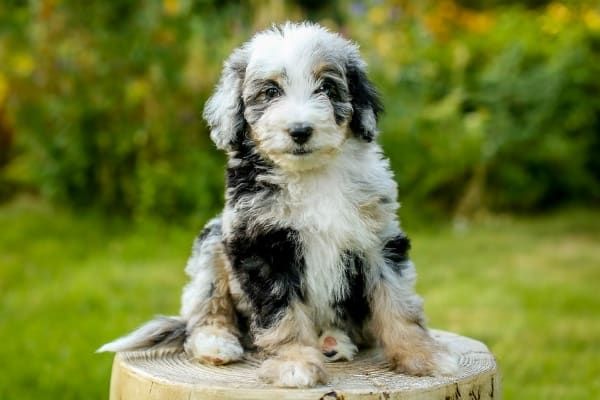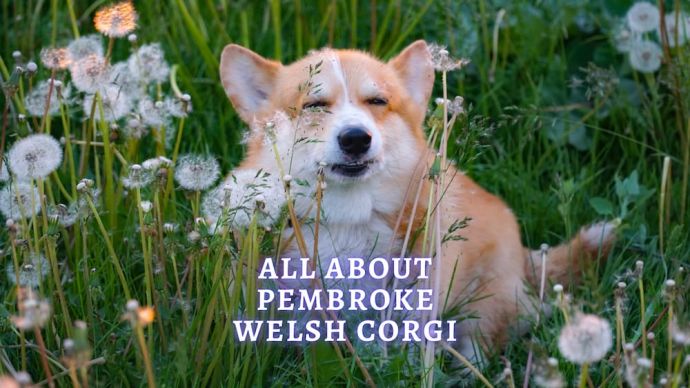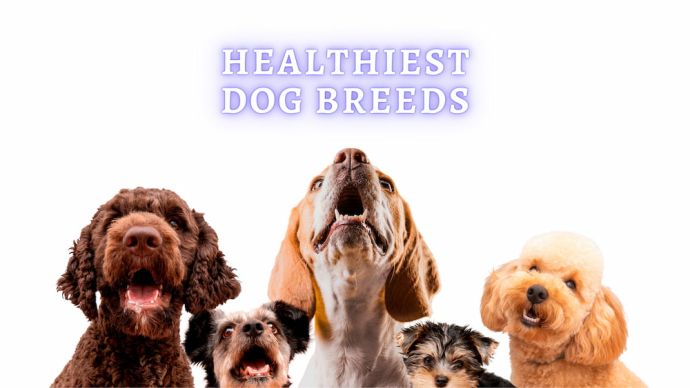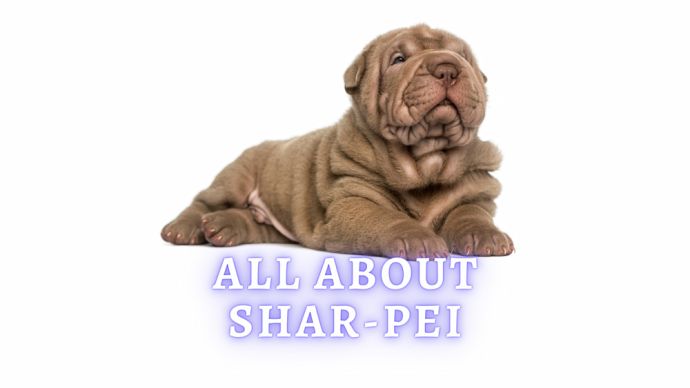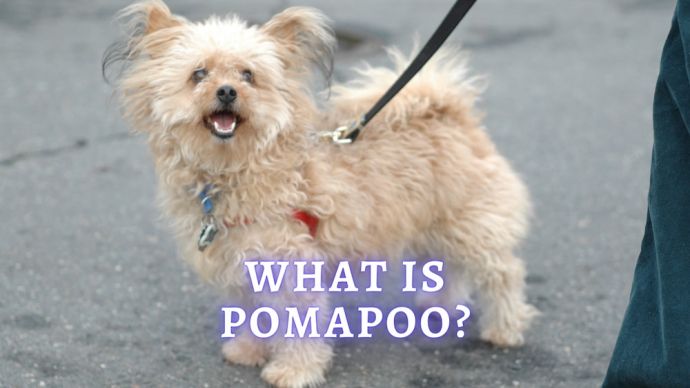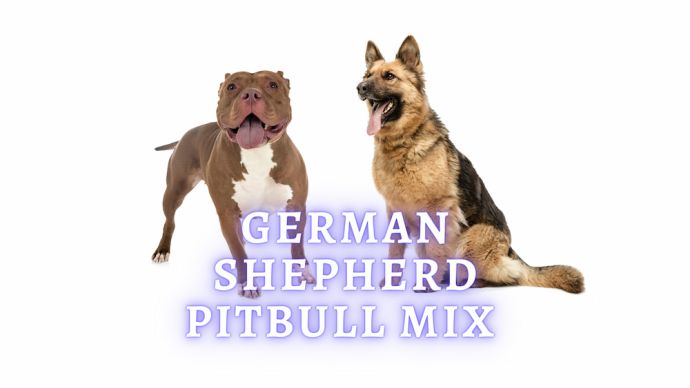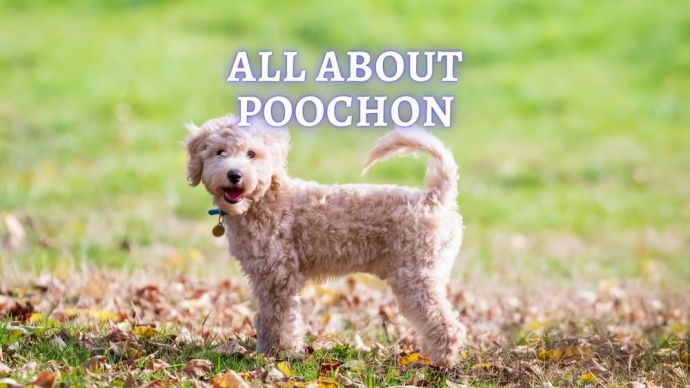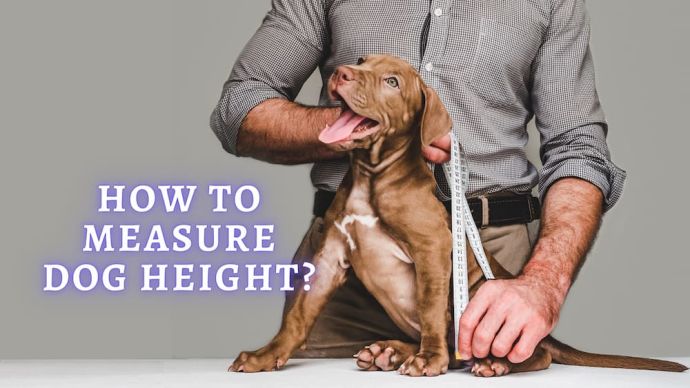Aussiedoodle: Breed Info, Personality, Activity Level and Life Span
Written by:
Author: Vicki Smirnova
Vicki Smirnova is a professional writer and editor who adores animals and helps readers get along well with their pets. She has been working in digital media for more than 5 years and has great experience writing content about lifestyle, including pets. Vicki specializes in dog health and nutrition, cat feeding, dog training. She is an aquarium lover and is passionate to write about fish care at home. Also, Vicki headed several websites and worked as a news editor.
View all 245 articlesLearn about our editorial process and veterinary review board.
Viewed: 1087
Updated on: 09/13/2021
The Australian poodle, or Aussiedoodle, is a hybrid breed of dog that was bred by crossing a poodle and an Australian Shepherd. These mixed breeds are referred to as “designer dog breeds,” a term that came into use at the end of the 20th century.
By crossing the poodle with different dog breeds, breeders sought to create a dog that would not cause allergies. But the main goal pursued by breeders is to reduce hereditary diseases. Designer dog breeds are mostly decorative companion dogs.
Purebred dogs tend to have a range of genetic health problems associated with specific breeds. Crossing two different breeds can help create a dog with fewer health problems and a longer life span than a purebred.
However, if you choose a purebred dog, you should be aware of the temperament and appearance of the progenitor. In crossbreeding, the character and appearance of puppies usually depend on the parents. So, to learn more about the Australian Poodle, it is important to know more about each of the parent breeds. [1]
Characteristics
| Weight | 25 to 70 pounds |
| Height | from 10 inches to over 20 inches |
| Colors and Patterns | Always tricolored. |
| Lifespan | 12-15 years |
| Suitable for | Family dogs, Performing tricks, Guide dog |
History of the Breed
The name of the breed speaks for itself, as the Australian poodle is originally from Australia. It is believed that this breed has existed for many years. The dogs were bred by crossing an Australian Shepherd and a Poodle in the late 1990s.
The Aussiepoo quickly became a popular breed because these dogs are very smart, playful, and active. Breeders were looking for a formula so the dog was not allergenic. And in the end, it turned out the dog is hypoallergenic and has few genetic diseases.
Both parent breeds have a long genealogy. The poodle dates back to 17th-century Germany, where it was used to prey on waterfowl. Australian Shepherds are not actually from Australia; they originated in the 19th century in the western United States on pastures that were used for grazing.
The Aussie dog breed was introduced to America around the 1840s and was widely used in the western states as a shepherd to help graze cattle in the developed expanses. American farmers and settlers greatly appreciated them for their great intelligence, extraordinary dedication, and endurance. Thanks to these qualities, the Aussie could endure all the difficulties of life in semi-wild conditions and provide a person with the necessary support.
The Australian Shepherd has a long coat. The muzzle is elongated, the head is oval in shape, and the ears are of medium length, triangular, and hang down on the sides of the head, but you sometimes do not notice it because of the fur. The chest is rounded and voluminous, the limbs are shorter than average, and the build is strong and muscular. The tail is long and fluffy.
The Australian Shepherd breed has an open and very friendly nature, making it an ideal companion for humans. It doesn’t matter how old you are—this pet recognizes itself as your best friend, period. If you are an elderly person and need a companion who is able to facilitate everyday life, the Aussie breed will be an excellent choice.
It is easy to train and raise a dog of the Australian Shepherd breed; this is facilitated not only by innate intelligence, but also by an instinctive desire to please the owner. In addition, the dog needs activity not only for the body, but also for the mind, and training just gives the necessary food.
The Poodle is the other parent of the Australian Poodle, and it is one of the oldest breeds of dogs. The current breed standard approves six variants of the poodle color, two types of hair, and four growth varieties: large (or standard, royal), small (or medium), miniature or toy poodle. The poodle is proportionally built. The length of the trunk exceeds the height at the withers, which should approximately correspond to the height at the sacrum. It’s chest is deep, long, wide, and well developed. Its front part is located high, which gives the landing of the head pride and nobility. The ribs are oval-arched. The line of the back should be smooth and the lower back strong and muscular. The poodle’s belly and groin are taut, but not as expressive as a greyhound’s.
The head is elongated, proportional to the body, and it has an elegant shape but not too light. The skull is clearly sculpted and slightly convex in profile. The transition line from the skull to the muzzle is almost invisible. The contour of the muzzle is straight, elongated, and not too sharp. The lips are of medium thickness; the upper lip goes over the lower one, but it does not hang down. The color of the lips in black, white and gray dogs is black; in brown, it is brown; in apricot poodles, the lips can have any shade from a thick dark brown to black. The same color scheme with the corresponding color of the animal is characteristic of the lobe of his nose. The nose itself is quite large, and the nostrils are well developed. The cheeks do not protrude, tightly fitting the zygomatic bones, which are weakly expressed. The eyes are almond-shaped, non-convex, and located slightly obliquely on the same line with the bridge of the nose. The eye color of black, white, gray, and apricot dogs is dark brown or almost black with a blue tint. Brown Poodles have brown eyes. Often, there is a dark amber shade in their eye color. The expression of the eyes is lively, curious, and even somewhat passionate. The ears are set high, rather long, and hang down to the corners of the lips along the cheeks and adjacent to them. They expand downwards and are rounded at the tips. The Poodle’s ears are effectively decorated with a thick long coat. The neck is strong and slightly curved in the back of the head. It has an average length that is slightly less than or equal to the length of the head.
Poodles need education; otherwise, such entertainment can cause the owner trouble. According to the description of the breed, Poodles are incredibly intelligent and cheerful with an easy-going character. Numerous experts consider them the standard of a companion dog. They are easy to train, and they love to learn. Due to their characteristics, Poodles often perform in the circus or at dog training competitions. It is not a good idea to leave the Poodle alone for a long time – he does not tolerate loneliness and will be bored. Small dogs are happy to accompany their owners on trips, even over long distances.
The Aussidoodle is the perfect combination of the two parent breeds. Since the parent dogs are very different, there is usually a mixed set of what can be expected in temperament from each breed. Often puppies acquire more traits of one of the parent breeds. One thing is for sure, both the Australian Shepherd and the Poodle have a high level of energy. This means that it is highly likely that your Aussiedoodle will end up being very energetic and will be a dog with relatively high needs in terms of activity.
Interesting Facts about Aussiedoodles
- Previously unknown hybrids were bred in 1955 in Australia.
- Initially, the dog was bred for people with allergies to fur.
- Representatives of this breed are knowledgeable. They love and can learn new things.
- The coat of Australian Poodles includes three types: wool, fleece, and hair.
- From poodles, they inherited a tendency to growth varieties. Australian poodles can be standard or miniature sizes.
Personality
Behavior and Character of the Breed
Australian Poodles are intelligent dogs that are very inquisitive and are easy to teach. These dogs like to learn something new, follow their owner’s commands and get approval. Like all dogs, the Australian Poodle needs early socialization and an obedience course.
During classes with the dog, the owner must be patient, consistent, and fair. Harshness and physical strength on the part of the trainer will lead to stubbornness and disobedience in the dog. You need to train when your dog is young so you will achieve the desired results much faster.
Temperament
The Australian Poodle can be described as a calm, affectionate, cute, balanced, and gentle dog. They are friendly to everyone: dogs, cats, and other pets. The Australian Poodle is very patient with children; for them, the dog is like a plush toy. Dogs of this breed are friendly to absolutely everyone and are not considered guard dogs.
The Australian Poodle is a dog with a high level of intelligence and loves to learn. They are willing to obey and require early socialization. In handling this dog, you should not use harsh or overbearing methods. Training should be based on reward, perseverance, fairness, patience, and consistency.
Breed Characteristics
| Overall Adaptability | 3 out 5 |
| Adapts to Apartment Living | 2 out 5 |
| Tolerates Being Alone | 2 out 5 |
| Tolerates Cold Weather | 3 out 5 |
| Tolerates Hot Weather | 3 out 5 |
| All-Around Friendliness | 4 out 5 |
| Affectionate with Family | 5 out 5 |
| Kid-Friendly | 4 out 5 |
| Dog Friendly | 4 out 5 |
| Cat Friendly | 4 out 5 |
| Friendly toward Strangers | 4 out 5 |
| Overall Health and Grooming Needs | 4 out 5 |
| Amount of Shedding | 3 out 5 |
| Drooling Potential | 4 out 5 |
| Easy to Groom | 3 out 5 |
| General Health | 4 out 5 |
| Overall Trainability | 4 out 5 |
| Easy to Train | 5 out 5 |
| Intelligence | 5 out 5 |
| Tendency to Bark or Howl | 2 out 5 |
| Overall Exercise Needs | 5 out 5 |
| Energy Level | 5 out 5 |
| Intensity | 4 out 5 |
| Exercise Needs | 5 out 5 |
Physical Characteristics of the Aussiedoodles
An Aussiedoodle has a rectangular body structure and is a versatile dog with a proud posture. They are muscular, flexible and agile. Since this breed has a mixed origin, the appearance of these dogs can also be quite diverse.
The poodle’s hair is wavy, so it requires careful handling. The hair gets tangled, so these dogs need to be combed twice a week. The Australian poodle may require regular cleaning or grooming.
Bathe your Aussiepoo no more than once a month. Also, these dogs need to have their teeth brushed and their ears carefully inspected for dirt and parasites. Their eyes need to be wiped with a warm infusion of chamomile. Trim the claws regularly.
Size
The size of your adult Aussidoodle will largely depend on which parent’s genes it inherits. Your dog’s size can range from 10 inches to over 20 inches, and its weight can range from 25 to 70 pounds.
Life Span
The average life expectancy is 12 to 15 years. These dogs are sensitive to certain drugs, namely Ivermectin, a drug used by doctors to treat heartworm.
Australian poodles are prone to such diseases as:
- Atrophy of the retina.
- Dysplasia of the patella.
- Hip dysplasia.
- Dysplasia of the elbow joints.
Aussidoodle Puppies
Aussidoodle puppies are brilliant students. They learn quickly. However, you can not bring up puppies in strictness. You don’t have to train them aggressively or raise your voice. Puppies should be encouraged for good behavior. Training should alternate with playing, socializing with people, and walking in different unfamiliar places. This allows you to socialize your dog and teach him to obey in different conditions and unfamiliar places.
The biggest mistake of novice owners is waiting for the dog to grow up before training him. They will grown much faster than you think. Develop good behavior and obedience from an early age. The training of the Aussidoodle puppy should be started as early as possible because, at an early age, dogs have the best learning abilities.
Your pet should learn the basic rules of behavior both at home and on the street from an early age. Along with training, it is important to ensure correct socialization and adaptation. This will help your puppy become a confident and balanced adult dog and avoid the nervousness that can lead to destructive behavior.
The main task is to explain to the young dog what exactly you want from it, what behavior you consider acceptable in certain conditions, and what is not acceptable under any circumstances. All family members, including the youngest and the elderly, must adhere to the same established rules. If the owner has managed to set priorities correctly, is consistent in the requirements, without humiliating the dog and without treating it rudely, then the dog will grow up obedient, even if it did not pass special training courses.
READ MORE: Puppy 101
Feeding
The ideal diet for an Aussiedoodle should be balanced and provide a large amount of energy. The Aussiedoodle tends to be overweight. The dog should not be overfed; you should follow a regular feeding schedule and not leave food out all day.
RELATED: Best Dog Food for Weight Loss
The Aussiedoodle can be fed both dry food and natural food. Dry food should be high quality, with vitamins and trace elements that will help maintain good health.
If you decide to feed your dog natural food, then give your dog lean meat (chicken, beef, veal) and fruit (apples and pears). You can give offal as well as fermented milk products, such as kefir and fermented baked milk with a small fat content. Buckwheat porridge, rice, and millet are allowed, as well as a boiled egg a couple of times a week.
Exclude sweets, salty foods, smoked foods, potatoes, and fatty meat. You shouldn’t feed the dog from the table.[2]
The Price of an Aussiedoodle
The cost of Aussiedoodle ranges from $500 to $5,000 depending on whether you adopt, rescue, or buy from a breeder. An Aussiepoo from a reputable breeder will cost you anywhere between $1,500 and $4,500 with the average cost being $2,500. The more expensive Aussiedoodles will be mini or toy size with a tri-color coat.
Breeders who regularly breed Aussidoodles are likely to get a higher price for their pups, given that the breed is definitely gaining popularity due to their appearance and easy training.
Rescue
Despite the fact that Aussiedoodle is a designer breed, some representatives can be found in shelters or in the care of rescue groups. If you want to take such a dog into your family, check your local shelters and become a friend for an Aussiedoodle.
On the other hand, dogs from shelters usually don’t have any history. This means that you will not be able to find out the genealogy of the pet and its tendency to diseases. However, many shelters these days allow adoptive parents to take a dog for a while to see if the puppy is suitable for the family.
The Need for Activity
The Australian Poodle is characterized by mobility and activity. These dogs need daily training, both physically and mentally. These dogs can be kept in the apartment, but it is important to remember that they need increased time outside the house, games, communication, and long walks. Like other dogs, the Australian Poodle will look for something to do on its own out of boredom, which could put your property and furniture at risk. If the Australian Poodle is kept in a country house, make sure your fence is strong.
Australian Poodles need a lot of exercises. These are high-energy dogs that need to be trained properly. Such a dog will need at least an hour of exercise every day. Aussidoodles are quite hardy dogs. You can even take your furry friend for a run. [3]
READ MORE: Ideas for Outdoor Activities with Your Dog
Final Word
Balanced, attractive, and cute, the Australian Poodle has an extremely pleasant personality. He is great with other dogs or pets and is extremely patient with children. At the same time, since the Australian Poodle is a very peaceful and friendly dog to almost everyone, it does not make a conscientious guard or a good watchman.
Pros
Cons
- Hypoallergenic
- Incredibly friendly
- Very active
- Tends to be overweight.
- Needs intensive training.
- Needs thoughtful care.
FAQ
Do Aussiedoodle puppies shed?
Some dogs shed often. However, some Australian Poodles inherit the characteristics of poodles and do not shed. Although the dog has a long coat, it cannot live in street conditions, but it feels great in an apartment.
Are Aussiedoodles good family dogs?
Representatives of this breed are friendly, peaceful, and intelligent. Aussiedoodles can live in any house with any number of people and children. With small children, the dog will behave patiently and with restraint in response to all their tricks. Such traits characterize this dog as carefree, energetic, and playful.
What’s the best way to train my Aussiedoodle?
Aussiedoodle refers to energetic active dogs, so it needs a lot of physical activity. Walks should be long (an hour or more).) from 2-3 times a day. This will allow the animal to run around a lot. The dog needs active movement, not regular walks. Outdoor games are necessary for the dog to frolic and spend its energy. Labradoodles have great potential, which allows you to train in a pleasant working atmosphere. These animals have athletic tendencies. Training can make them search dogs, guide dogs, and rescuers. You can train dogs only by loyal methods. Aggression will not lead to anything good.
Anything else I should know about owning this dog?
These dogs, like any other, have a tendency to certain diseases. You can prevent the development of any of the diseases by giving the dog the necessary vaccination promptly. The first time the puppy is vaccinated is when it reaches the age of 1.5 months. The second vaccination is given 2 weeks after the first. When the puppy is 6 or 7 months old, the third vaccine is administered; this is the last vaccination in a year. Vaccinations are repeated annually.
Article Sources:
- Birchler, James A., et al. “Unraveling the Genetic Basis of Hybrid Vigor.” Pub Med, ncbi.nlm.nih.gov/pmc/articles/PMC1559732/.
- “Aussiedoodle Dog Breed Information and Pictures.” Dog Breed Info, dogbreedinfo.com/aussiedoodle.htm.
- “Designer Dog.” Encyclopedia Britannica, britannica.com/animal/designer-dog.
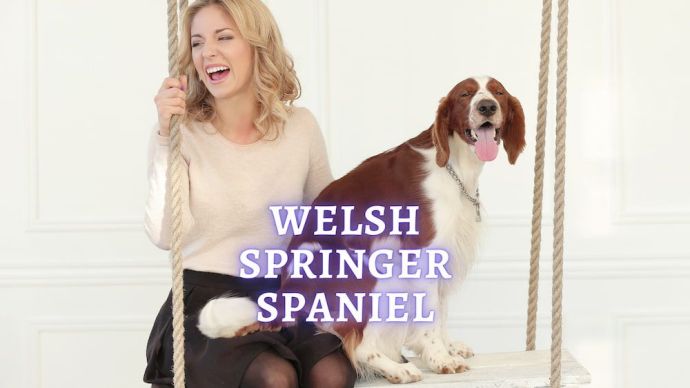 Dog Breeds Welsh Springer Spaniel: Welsh Springer Spaniel Temperament, Care and Diet
Dog Breeds Welsh Springer Spaniel: Welsh Springer Spaniel Temperament, Care and Diet - 133
- 0
 Dog Veterinary Tips Why is my Dog throwing up: Causes and Preventing (Veterinary Advice)
Dog Veterinary Tips Why is my Dog throwing up: Causes and Preventing (Veterinary Advice) - 21356
- 5
 Dog Care My Dog Keeps Scratching His Mouth: Reasons Why Your Dog Scratching Face
Dog Care My Dog Keeps Scratching His Mouth: Reasons Why Your Dog Scratching Face - 16543
- 1









